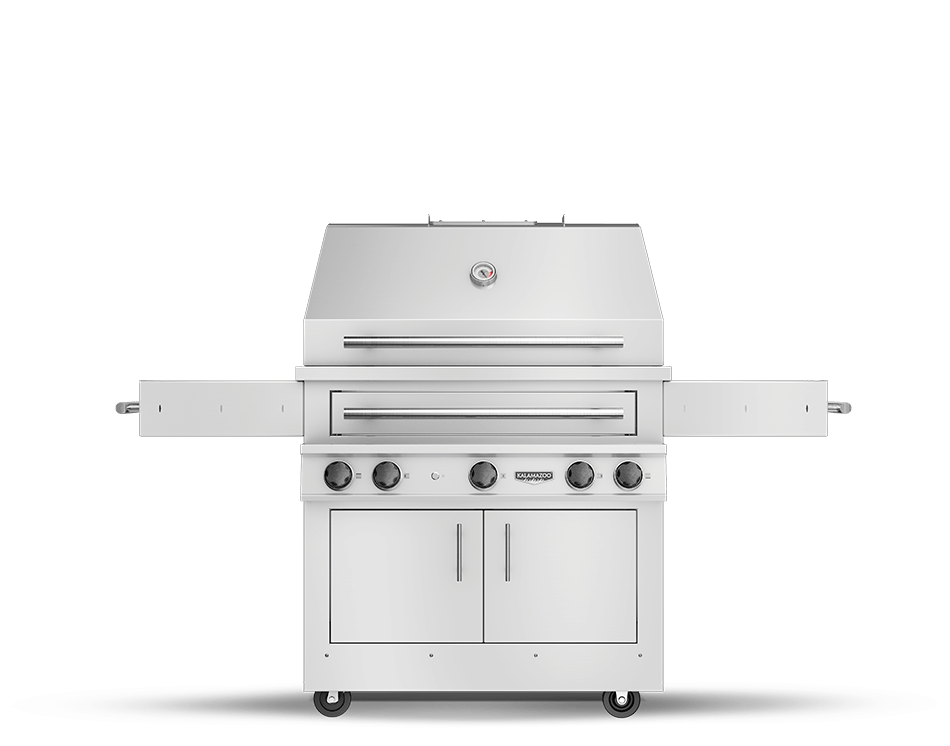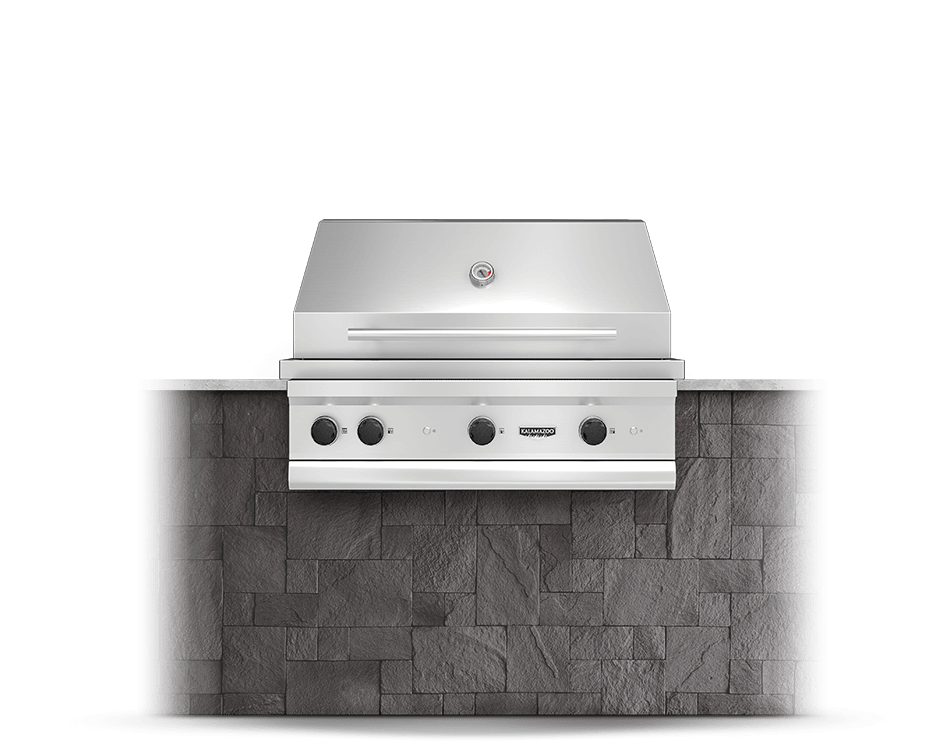
Russ Faulk, chief designer and head of product, was recently interviewed by Steven Raichlen, acclaimed authority on barbecue and best-selling cookbook author, for an in-depth look at the making of Kalamazoo's newest Kamado grill, The Shokunin. Read on to get a detailed look at everything that went into creating this grill.
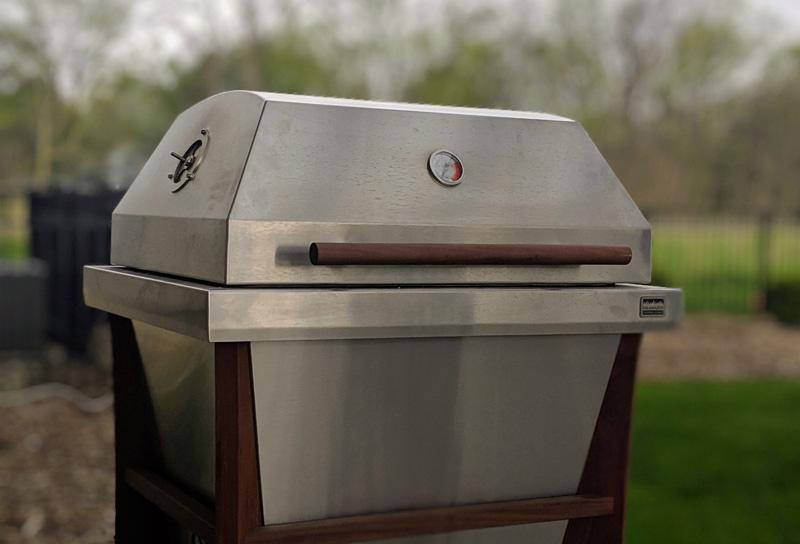
After creating the world’s best tri-fuel grill, the most awesome gaucho style grill and rotisserie, a high-performance pizza oven, and an even higher performance gravity fed smoker, you’ve decided to enter the crowded field of Kamado-style cookers. Why?
One of the joys of outdoor cooking is mastering different techniques and different fires, and the Kamado represented a chance to expand our repertoire. I think there is a reason so many people are so passionate about cooking on Kamados, and we wanted in on the fun. After a few design experiments, we realized there were opportunities to create something unique, so we forged ahead with our own take.
What makes the Shokunin different than all the other Kamados out there? What can your Kamado do that the other Kamados can’t?
We took the key design characteristics of a more traditional Kamado-style cooker and emphasized them in our effort to raise performance to new levels. First, a Kamado is taller than a regular charcoal grill. We made our Kamado even taller than a regular Kamado so that the fire could be further below the food. Our goal was to deliver heat that is more even and gentle for barbecue. Second, a kamado is insulated for greater efficiency and less temperature fluctuation. We dialed that up with two full inches of insulation between two layers of stainless steel. The Shokunin is incredibly efficient, and the outside of the body and lid stay cool to the touch.
We also threw some of the traditional characteristics out the window. Our Shokunin Kamado grill is rectangular because I believe it is better for working with multi-zone fires and indirect cooking. The way I think about it is that a rectangle divided into two parts is still two rectangles. Divide it into three, and you still have three rectangles. Any way you set up a multi-zone fire, I think a rectangular cooking area will be easier to work with. The shape is the most obvious difference, but we’ve also engineered a multi-level system for the fire grates. You can build your fire at any one of three levels inside the grill. We call the lowest position the “barbecue” position. The middle is the “roasting” position. And the highest position is the “searing” position, placing the fire just four inches below the grill grate. For reference, our middle fire grate position is roughly where you will find the fire grate located in some of the most popular Kamado brands. People have also been excited to see the way the cooking grates and fire grates can all be flipped up into an open position without removing them from the grill. This gives you easier access to start the fire and the ability to access the fire while cooking. I think it also makes cleanup a lot easier.
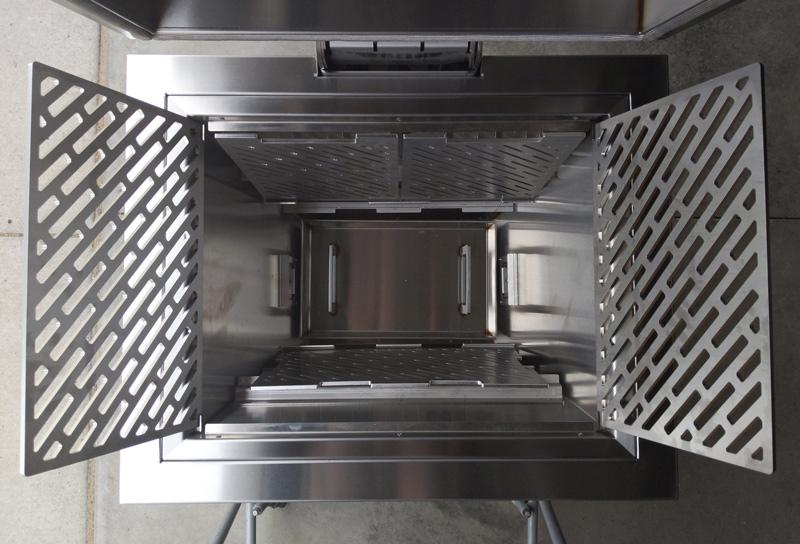
I gather shokunin means “master” or “artisan” in Japanese. Why that name?
It pays tribute to the Japanese roots of the Kamado grills we enjoy here in the USA. Additionally, it is a nod to the artisan nature of live fire cooking and the mastery of the fire that we all pursue when cooking on a Kamado.
Tell me about the design process. When did it start? How long did it take? What were some of the challenges you faced and how did you overcome them?
The first sketches go back about five years. These design exercises were primarily in pursuit of something visually unique. We didn’t start working on it in earnest until fall of 2018, when we selected a high level design to explore more seriously. That is when we moved the exercise into CAD, where exploration and refinement continued for a little more than a month. The first real-world prototype was promising enough that we gave the Kamado project the official green light and set the goal of previewing the design at the Kitchen and Bath Industry Show (KBIS) in Las Vegas.
The first challenge we faced with the prototypes was the vent design. We created a pretty cool looking air shutter that functioned in a manner reminiscent of the aperture on a camera. It was a fun concept, but it was too complex and did not allow for enough control of the oxygen. As you know, that is critical to successful temperature control in a kamado. We went back to the drawing board and came up with something new. Another challenge was the sheer weight of the lid. It required a fair amount of strength to open the grill, so we had to incorporate a spring assist.
Tell me about the construction: what materials / special materials did you use and why? How does your Kamado differ in design from the other Kamados out there?
Part of why the Shokunin looks so stunning is the combination of materials. We received a fantastic response to the Arcadia Series of outdoor kitchen cabinetry and refrigeration when we launched it a couple of years back. That was the first time Kalamazoo had worked with ipe wood, and I think the pairing of ipe wood with stainless steel is simply beautiful for outdoors. Ipe is extremely durable and resistant to the elements. We use only Forest Stewardship Council (FSC) certified wood, and it costs a small fortune. But, the result is a Kamado design that turns into a beautiful patio furnishing.

The Shokunin has an 18 by 24 inch grate. How’s that compare with, say, a Big Green Egg or Primo?
Our grates measure 432 square inches in size. That’s a little smaller than an XL Big Green Egg at 452 square inches, and quite a bit larger than their large at 254 square inches.
You avoided the traditional ceramic construction in favor of insulated stainless steel. Why?
The two main reasons are aesthetics and practicality. I think the stainless steel Shokunin more naturally fits in visually with a Kalamazoo outdoor kitchen than a ceramic Kamado ever could. We’re also a company that has deep roots in stainless steel fabrication. That’s the skill set of our artisans.
How does the design influence the performance? What’s the temperature range of your Kamado? How much charcoal does it take and how long will a single load of charcoal burn?
We approach design and performance as inseparable goals. The performance targets are established before the visual exploration begins. In the case of the Kamado, we were committed to offering a unique approach with several cooking advantages. And, we pledged that if we couldn’t deliver those advantages, the product would never be launched. The Shokunin has exceeded my expectations in every parameter, so we are very excited to bring it to market.
The practical minimum temperature is 200°F. The maximum is beyond 1,000°F, but that would be an open-lid grilling scenario. We recommend keeping the lid open at anything beyond 750°F. In one of our early tests, we loaded the Shokunin with 12 pounds of charcoal and set up a WiFi thermometer so that I could monitor the temperature remotely. Much to my delight, the grill remained above 225°F for 65 hours straight. I can’t imagine there is a more efficient Kamado design out there.
Can your Kamado be used for smoking?
It can absolutely be used for smoking. I wouldn’t dare call it a Kamado if it couldn’t. I suggest mixing some wood chunks in with lump charcoal on the fire grate in the lowest position. The additional fire grates can be placed on the middle or upper position to hold a water pan above the fire if you so desire.
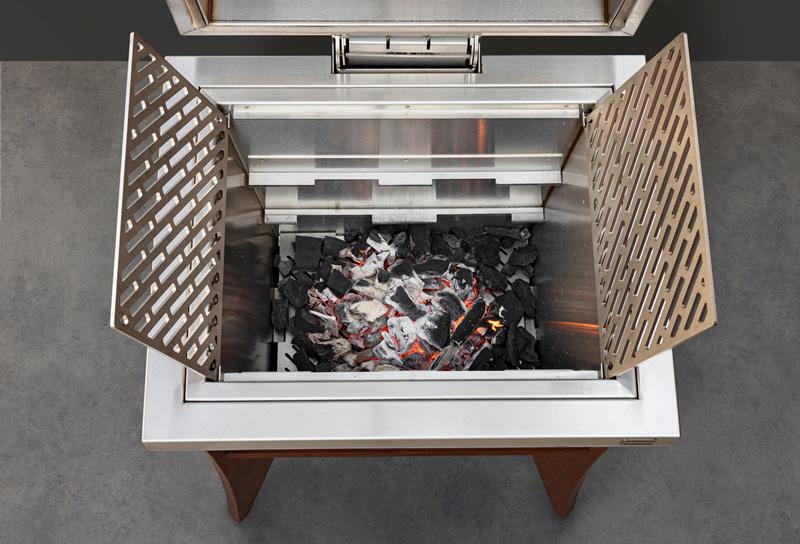
How do you recommend setting it up?
There are a lot of options for how you setup the Shokunin. It is very versatile. Not only can you build the fire at three different heights inside the grill, you can build fires at multiple heights at the same time.
With the way we’ve designed the cross-flow ventilation system, you can offset a fire to the left and feed oxygen through the left vent on the bottom. Place your food on the right side of the cooking grate and exhaust through the right vent on the lid, and you are ensuring that the heat and smoke are circulating past the food. I’ve used this setup for spatchcock chicken and for salmon fillets. It amazes me how crispy the skin on the chicken gets in just 35 minutes cooking time. And the salmon is beautifully browned on top without every flipping it over.
The rectangular shape and the ability to build the fire up close to one half of the cooking grate makes the Shokunin a perfect tool for “sear and slide” steaks and chops.
The first step to setting up the grill is to place the fire grate(s) at the level most appropriate for your cook. Load a generous amount of lump charcoal (either centered or offset to one side), and then light the fire from a single point on the top of the charcoal at the center of the pile. Once you have good glow established, you can close the lid. I keep all four air shutters wide open until I am within 150°F to 100°F of my target temperature, then I begin closing them down. When I am within 100°F to 50°F of the target, I close the top vents down to a mere sliver of opening. The Shokunin is rather unique in that it can hold 500°F at this small opening.
What meats / foods do you particularly recommend for your Kamado. Is there anything it can’t do?
I’m still exploring the possibilities myself, but I haven’t yet found anything it can’t do. My favorites so far have been smoked beef ribs and roasted chicken. I’ve had good luck grilling asparagus, corn and squash. I look forward to experimenting with baking bread in the Shokunin.
What is the price of your Kamado? When will it be available?
The Shokunin Kamado Grill is priced at $5,995, and it is available to order now through Kalamazoo dealer showrooms and on KalamazooGourmet.com. Each Shokunin is built-to-order in limited quantities.
Steven Raichlen is the host of Project Smoke and Project Fire on PBS, and the author of more than 30 books, including The Brisket Chronicles, Project Smoke and The Barbecue Bible. Visit him at his website: www.barbecuebible.com.
